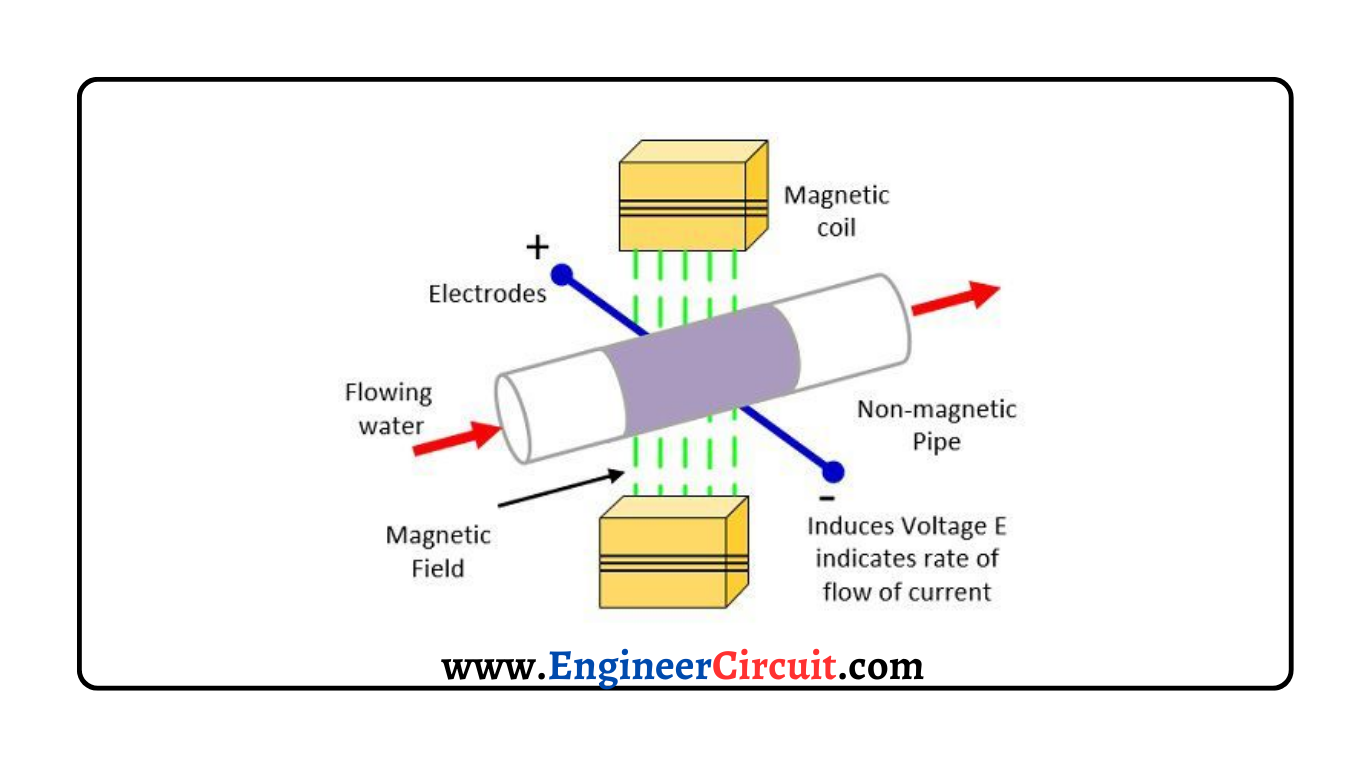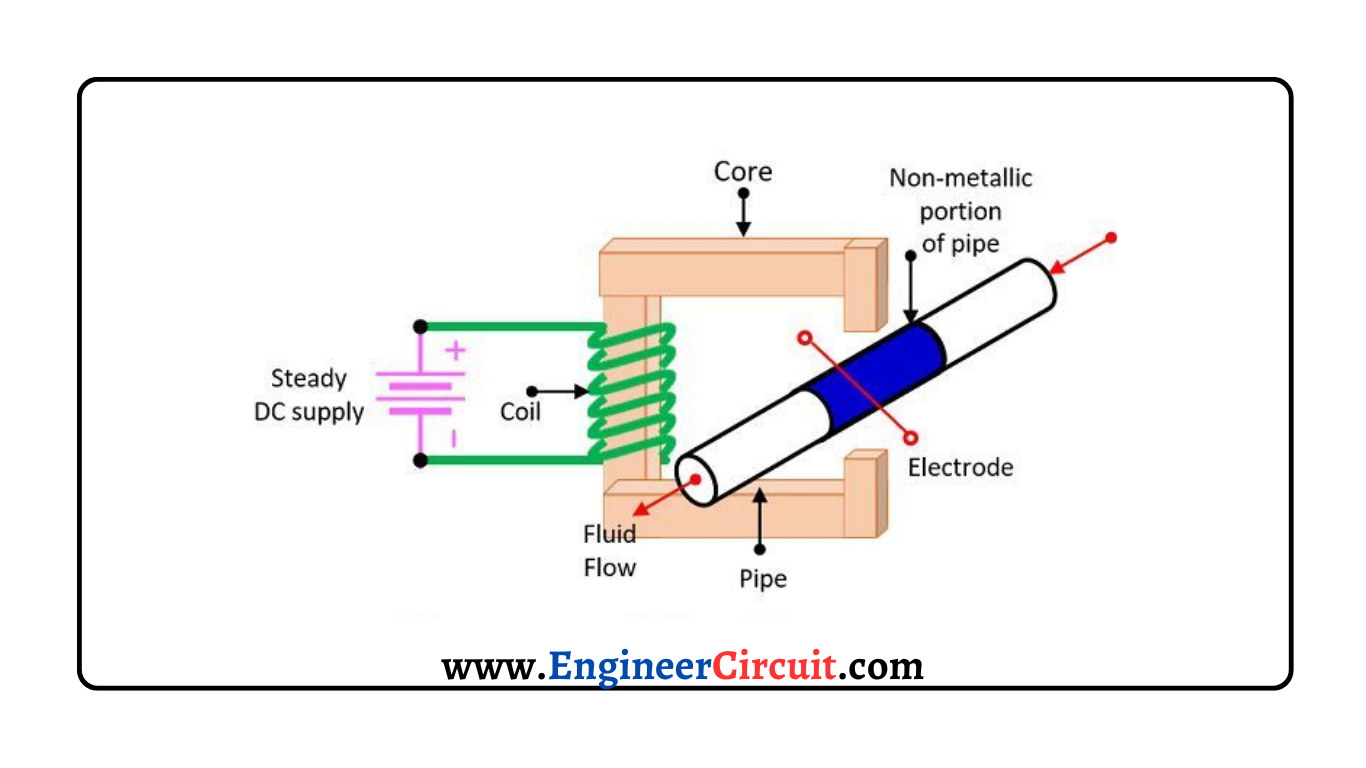What are Electromagnetic Flow Meters?
The electromagnetic flow meter is a device that measures the flow of liquid as it passes through a pipeline. It is specifically designed to measure the flow rate of electrically conducting fluids, which refers to liquids that allow the passage of electric current.
Working Principle of Electromagnetic Flow Meter
The working principle of the electromagnetic flow meter is based on Faraday’s Law of electromagnetic induction. According to this law, when a conductive liquid passes through a magnetic field, it induces a voltage across the conductor. The magnitude of the induced voltage is directly proportional to the velocity of the liquid, the length of the conductor, and the strength of the magnetic field.

To generate the magnetic field, a coil is mounted on the external metallic body of the pipe. The liquid, acting as a conductor, passes through the magnetic field, inducing a voltage across the coil. The magnitude of the voltage depends on the velocity of the liquid.
Construction of Electromagnetic Flow Meter
The construction of the electromagnetic flow meter includes an electrically insulated pipe made of fiber, electrodes positioned opposite to each other, and a magnetic coil placed on the pipe to generate the magnetic field. The insulated pipe carries the liquid whose flow needs to be measured.

An electromagnet is placed around the insulated pipe, which induces the magnetic field around the pipe. This arrangement resembles a conductor moving in a magnetic field. The flow of the liquid induces a voltage across the coil. The induced voltage can be expressed as:
V = B * l * v
Where: V = Induced voltage (proportional to flow rate) B = Flux density of the magnetic field (wb/m²) l = Length of the conductor (equal to the diameter of the pipe) (m) v = Velocity of the liquid (m/s)
Advantages of Electromagnetic Flow Meter
The advantages of the electromagnetic flow meter are as follows:
- The output voltage of the electromagnetic flow meter is directly proportional to the flow rate of the liquid.
- The output is not influenced by the varying characteristics of the liquid, such as viscosity, pressure, or temperature.
- The electromagnetic flow meter can measure the flow of slurries, greasy substances, and handle corrosive fluids.
- It can be used as a bidirectional meter.
- The electromagnetic flow meter is capable of measuring extremely low flow rates.
Disadvantages of Electromagnetic Flow Meter
On the other hand, the disadvantages of the electromagnetic flow meter are:
- The electromagnetic flow meter has low accuracy.
- It is heavy and extremely large in size.
The electromagnetic flow meter is also commonly known as the magmeter.